Getting in on the best Vancouver whale watching tours is the easiest way to make our city unforgettable.
Where else can you see an orca jump clear out of the water and clap down on the mighty Pacific like a gunshot ringing out in the distance?
Let’s break down whale watching in Vancouver and find you a tour based on your needs.
Vancouver Whale Watching: How to Go on Killer Whale Tours in Vancouver (2024)
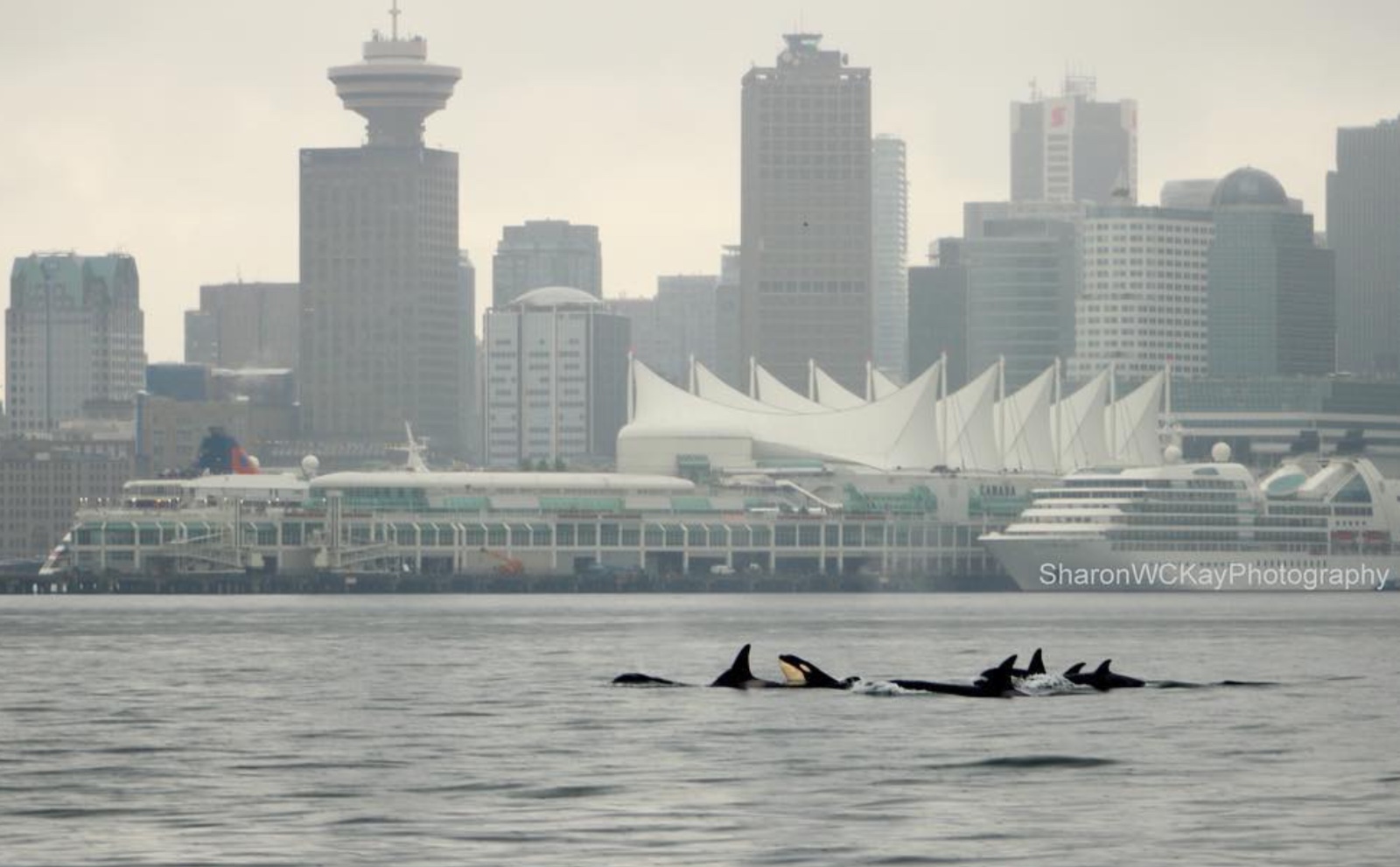
First off, the best time of year to see whales in Vancouver is between March and October.
This is when you’ve got the best shot to see killer whales, humpback whales, and grey whales.
These whales rarely come into the harbour (hence the photoshop above), so the only way to see them is through guided Vancouver killer whale tours.
⚠️ Warning ⚠️ – We’re now in high season, and many whale tours are extremely low on tickets – make sure to lock in your free cancellation/lowest price guarantee tickets by booking your whale tickets in advance.
Vancouver whale watching tours run out of downtown Vancouver, Granville Island (10 minutes from downtown) and historic Steveston Village (30 minutes south of downtown).
Each whale watching trip from Vancouver includes professional wildlife guides onboard.
All the whale watching companies that I’ll be listing also guarantee whale sightings.
Best Whale Watching Tours in Vancouver
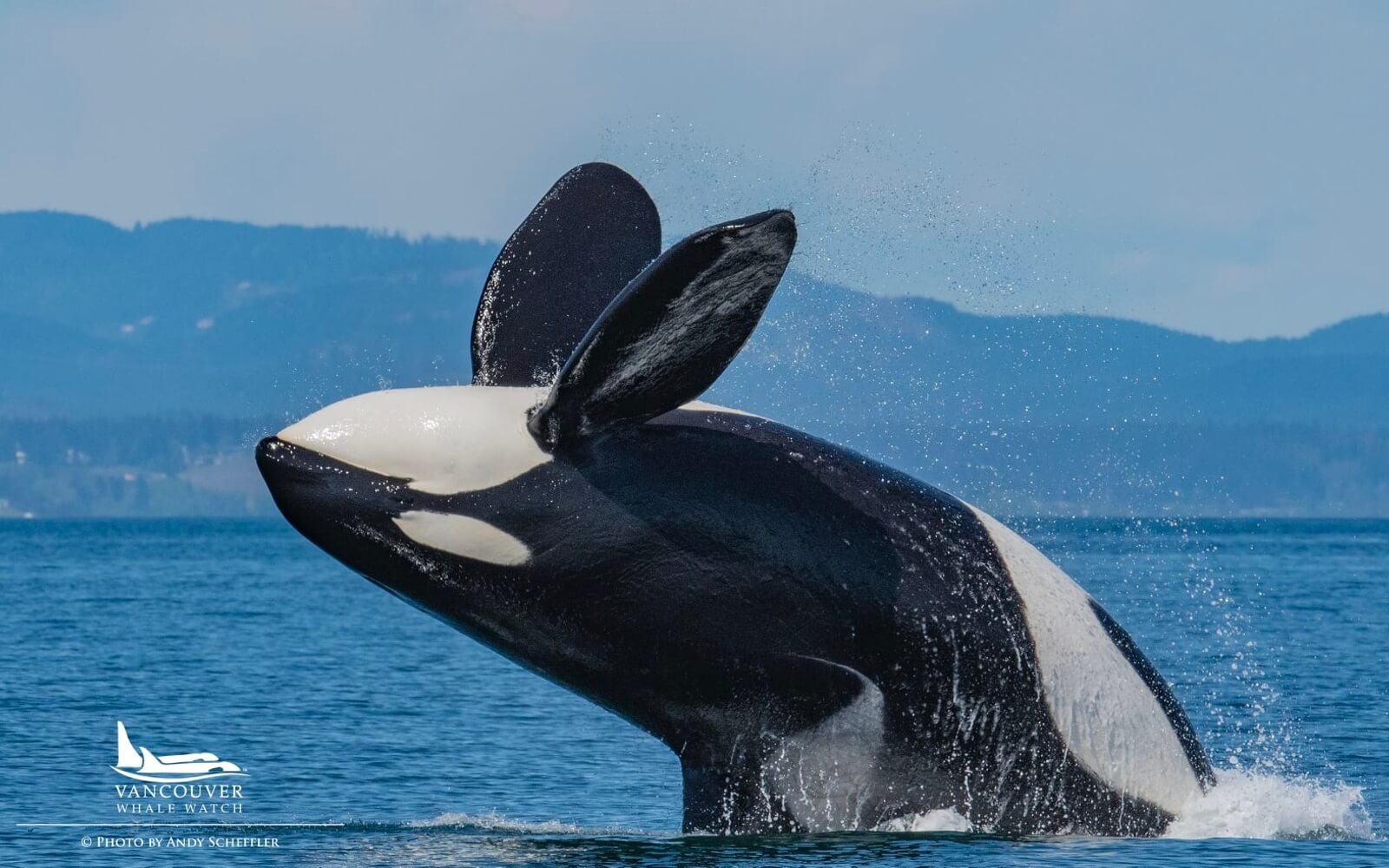
Vancouver Whale Watch: The Cheapest Whale Watching Tour in Vancouver
Departure Point: Steveston Village | Price: $210.99 $191.25 CAD
This is actually the cheapest Vancouver whale watching tour, but I think it offers value in other ways, too.
First, it departs from Steveston Village – a historic fishing village which is a tourist attraction in itself – which means smaller crowds.
Being an area of less marine traffic, there’s also a higher whale spotting rate at over 95%.
Their smaller, open Zodiac-style vessels also bring you even closer to the orcas, bald eagles, and sea lions.
In guaranteeing your spot with the orange button below, you also lock in drinks, snacks, and a return shuttle from your downtown Vancouver hotel.
Get more info + lock in your spots with lowest price guarantee tickets using Viator/Tripadvisor:
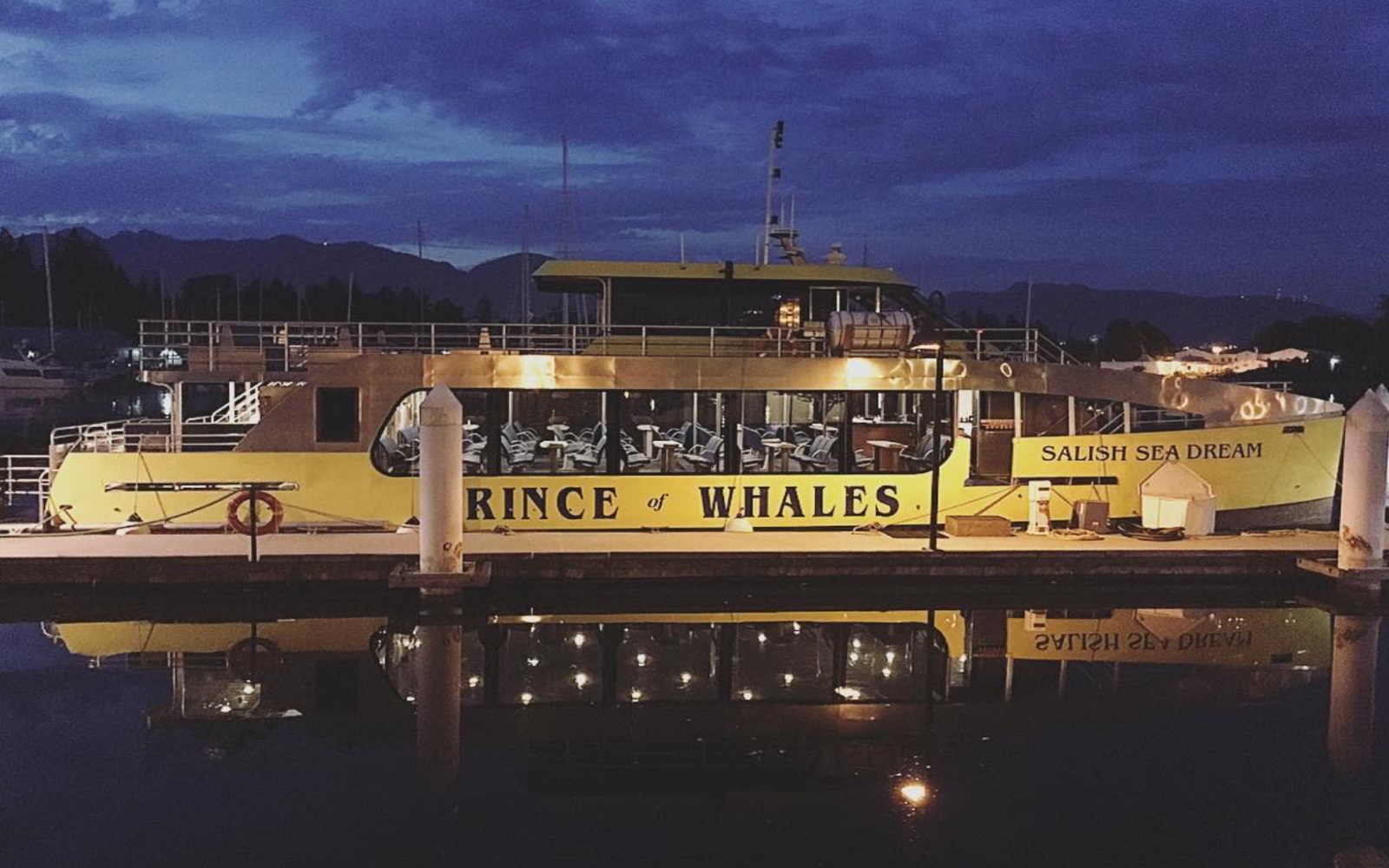
Prince of Whales: Best Granville Island Whale Watching Tour
Departure Point: Granville Island | Price: $255.99 $235.99 CAD
Prince of Whales kills it with their half-day whale watching tour from Vancouver aboard the Salish Sea Freedom.
This is a luxury, high-speed catamaran that’ll get you to the action in a hurry – right from Granville Island.
These whale tours are on the biggest ships in the fleet, which means stability for older travellers, children or guests prone to seasickness.
Each whale trip includes 3-4 naturalists, so this is arguably the most educational orca watching tour as well. They even throw in a free photo souvenir package.
Get more info + lock in your spots with lowest price guarantee tickets using Viator/Tripadvisor:
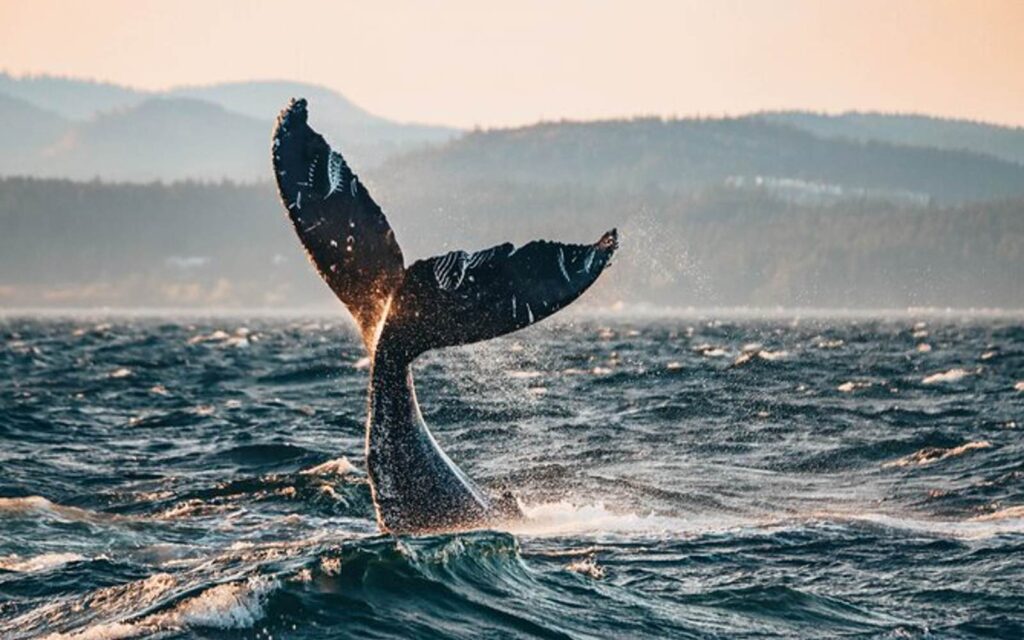
Prince of Whales: Best Sunset Whale Watching Tour of Vancouver
Departure Point: Granville Island | Price: $234.99 $214.99 CAD
Looking to add a little romance or some epic dusk lighting to your Vancouver orca tour?
This exclusive sunset whale watching tour runs only from June to September to take advantage of the good weather.
You’ll roll out with a boat featuring an indoor, heated cabin with floor-to-ceiling windows and open-air decks as well.
They’ll even send you home with professional photos of you and your loved ones aboard.
Get more info + lock in your spots with lowest price guarantee tickets using Viator/Tripadvisor:
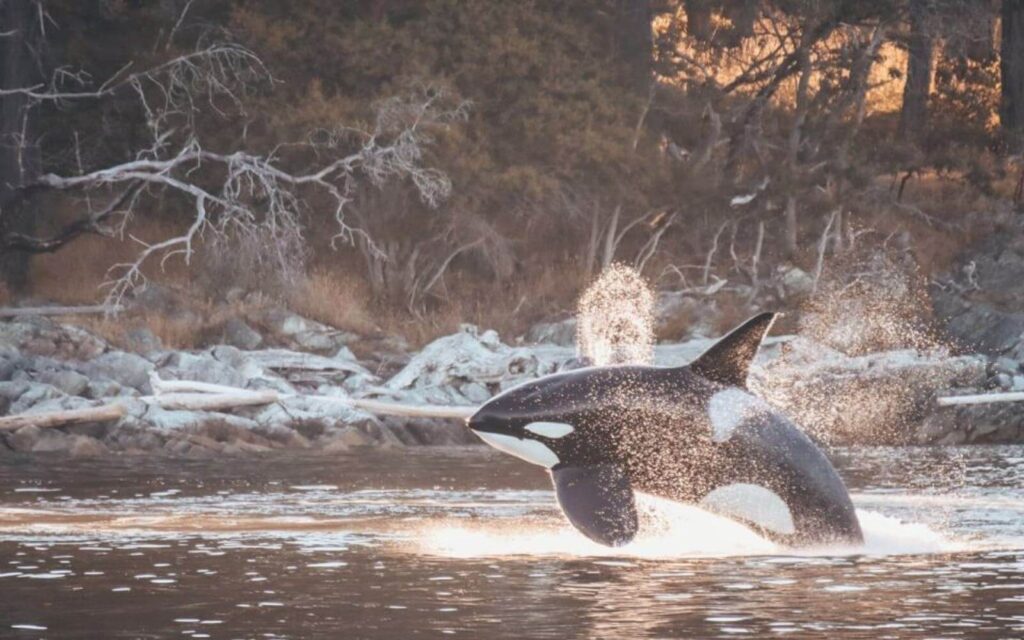
Departure Point: Your Hotel or Residence! | Price: $420.00 $389.00 CAD
Lotus Land: Best Whale-Watching Tour in Vancouver for Hotel Pickup
This true door-to-door Vancouver whale tour is all about convenience. In fact, forget the car or bus because they’ll pick you up right at your hotel, Airbnb, or private residence.
They’ll bring you right to the docks, where you’ll embark on a Pacific Coast safari on the hunt for killer whales, sea lions, bald eagles, and all sorts of marine wildlife.
At five hours long, this is the best whale tour in Vancouver for people looking for more time on the water. Expect a small group tour with family vibes.
Finally, the tour ends with a visit to legendary Granville Island.
Get more info + lock in your spots with lowest price guarantee tickets using Viator/Tripadvisor:
Vancouver Whale Watching Prices
So, how much does it cost to go whale watching in Vancouver?
Below, I’ve got a handy graph of whale watching prices, with some extra info on departure points.
| Tour | Location | Price | More Info |
| Vancouver Whale Watch | Steveston | $191.25 | More info |
| Prince of Whales | Granville Island | $235.99 | More info |
| Sunset Whale Tour | Granville Island | $214.99 | More info |
| Lotus Land Safari | Hotel Pickup | $389.00 | More info |
Again, the cheapest whale watching tour in Vancouver is with Vancouver Whale Watch.
Whale Watching Vancouver Discount
With a typical Google search, you might think you can grab yourself a tidy 50% discount – I wish!
The problem is that these websites are ‘click farms’ with fake codes to get you to their PPC (Pay Per Click) website.
Not to mention, Vancouver whale watching is a once-in-a-lifetime experience: it can’t be put on sale like a sweater.
Unfortunately, whale tour prices have only been going up for years, so maybe it’s time to get them while they are comparatively cheap!
Warning: I’ve dedicated 1000’s of hours to this free resource. I’d love for this to become my full-time job – Tripadvisor, watch out! 😛 So please know I may earn a commission from some of the links here at no extra cost to you. You can read our affiliate disclaimer for more info.
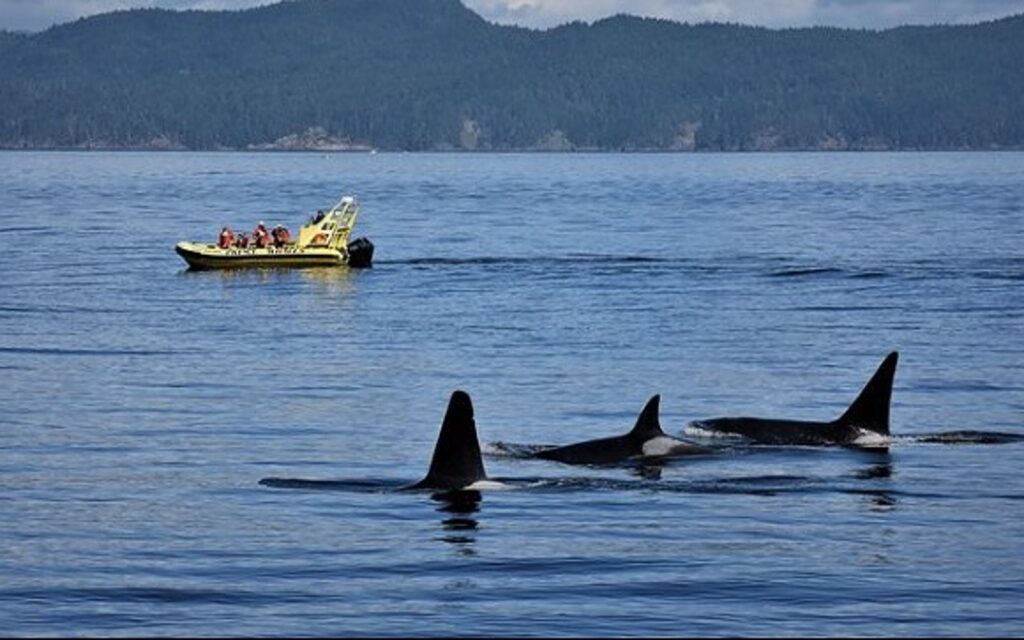
How to Book Vancouver Whale Watching Tickets
Warning: For environmental reasons, these tours run at limited capacities. Ensure you book your tickets way in advance or it’s likely you’ll find your dates fully booked.
Booking tickets for Vancouver orca tours is as simple as purchasing them on Amazon—in fact, it’s even faster.
Here, I’ll walk you through the process with our top whale watching tour: Vancouver Whale Watch.
The same is valid for all the links here, but since it’s my #1 recommended whale tour I’ll choose this.
1. Open the Vancouver Whale Tour of Your Choice
- Head to the Vancouver Whale Watch portal on Viator.
- Here, you’re booking with a publicly traded company (Tripadvisor) with a $3 billion market cap.
- Booking with them gets you book now pay later killer whale tours, which help a lot with budgeting.
- You’re also locking in Viator’s lowest price guarantee to help you save money.
2. Select Your Whale Tour Time
- Click the green ‘Check Availability’ button on the product page
- Select a date on the calendar (between April 1st – October 31st)
- Choose the number of people and click ‘Apply’
- Select your time and click ‘Reserve Now & Pay Later’ or ‘Book Now’
FYI: If you choose ‘Reserve Now & Pay Later,’ you’ll have the option to pay for the tickets at any point up to 48 hours before the whale tour.
Change your mind? Either way, you can cancel your tickets free of charge up to 24 hours before.
Boom! You can lock in your killer whale tour of Vancouver dates in less than 2 minutes.
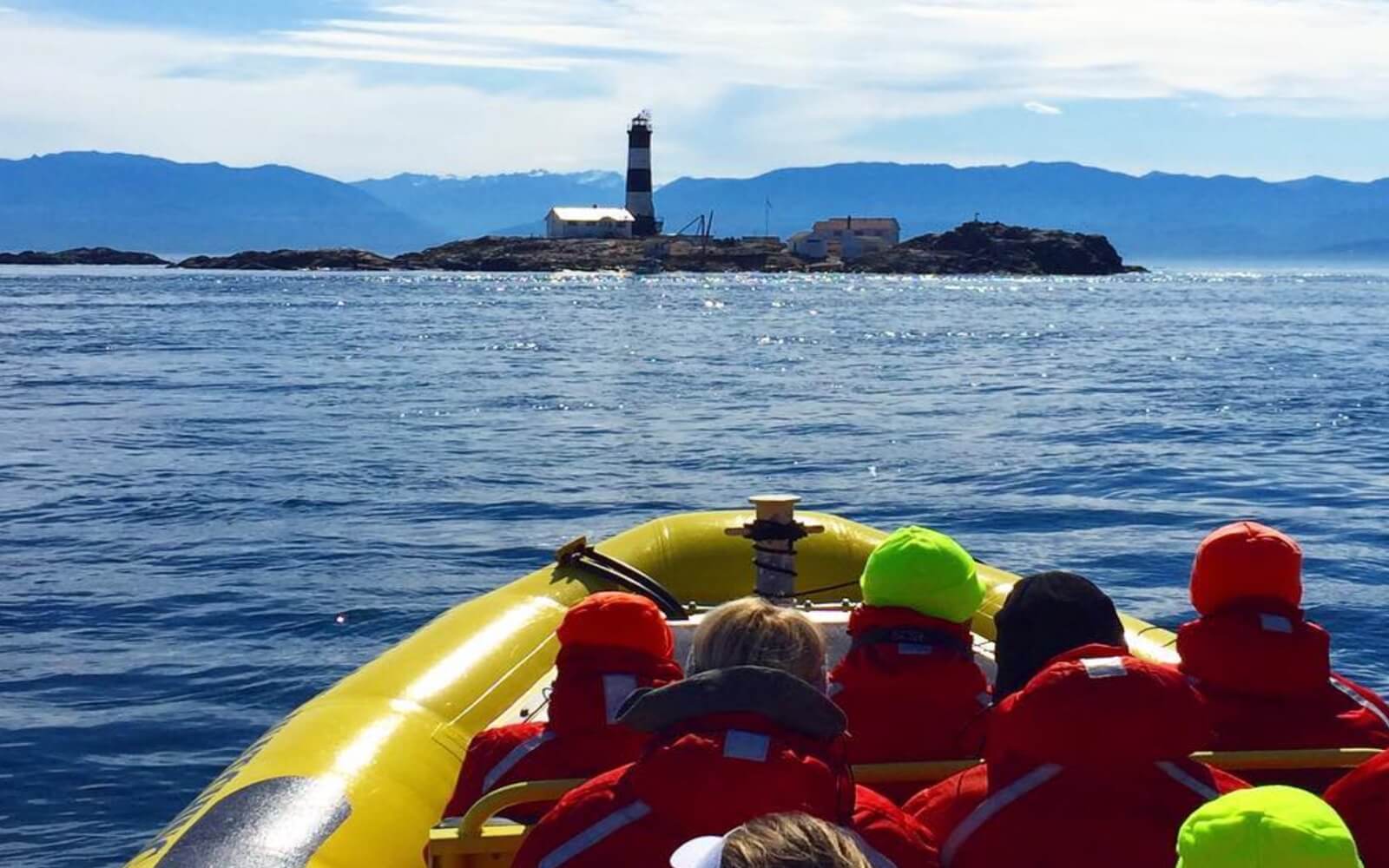
How to Choose the Best Vancouver Whale Watching Tour
Vancouver Orca Watching Safety
First of all, there’s no need to worry about safety as each whale tour is certified by Transport Canada.
This means these Vancouver orca tour boats are routinely inspected and follow stringent safety protocols.
That’s why my readers usually base their whale watching tour selection on the following:
- Tour length
- Departure point
- Comfort
- Cost
Let’s break it down even further…
Duration of Whale Watching Tours in Vancouver
In general, there are two main whale watching tour durations on offer:
- Half day whale watching tours (3 hours)
- Extended whale watching tours from Vancouver (5-8 hours)
Most people can only stand about three hours on the water, and I don’t blame them, so efficient half-day whale tours like Vancouver Whale Watch are the standard.
The Lotusland Hotel Pickup Whale Tour is better for those looking for extra sea time.
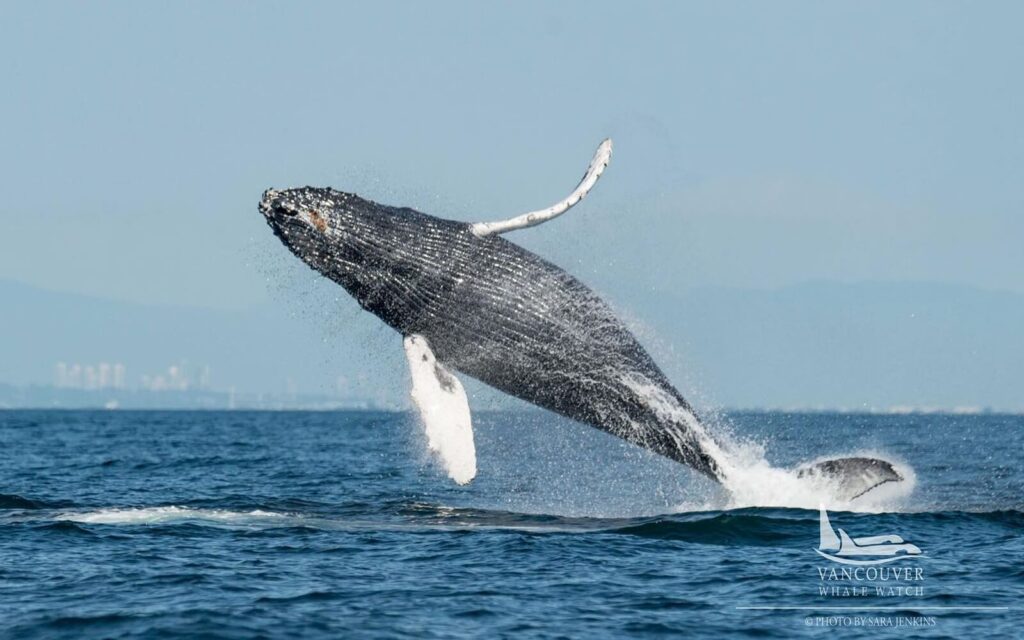
Whale Tour Departure Locations
As mentioned, orca tours in Vancouver depart from downtown, Granville Island, and Steveston Village.
So, your best whale watching tour in Vancouver really depends on how you want to structure your Vancouver itinerary.
Generally, the three main options are:
- Taking Vancouver Whale Watch and turning it into a day visit to historic Steveston Village. Steveston whale watching tours are often the better option as they’re an hour closer to the grounds.
- Whale watching at Granville Island with Prince of Whales means you can combined it with a visit to Vancouver’s best food market..
- Booking hotel pickup tickets with Killer Whale Safari or Vancouver Whale Watch and letting them take care of it.
Type of Boats Used for Your Orca Tour Vancouver
Those prone to motion sickness, seniors, and families with small children always prefer the large, luxury catamaran whale watching tour.
Other travellers looking for adventure, true exploration, and even a few wave bumps usually select the Killer Whale Safari.
Vancouver Whale Watching Weather
It’s no secret: Vancouver is famous for clouds and rain.
But can you go whale watching in the rain in Vancouver? Yes, as long as the seas remain calm.
If you’re booking orca whale watching from Vancouver last minute but see bad weather in the forecast, you’re going to prefer booking the whale watching tours with the biggest boats.
At any rate, all orca whale watching in Vancouver should be booked using the links above – these get you free cancellation tickets, so you’re always free to back out and reschedule if it doesn’t look promising.
Wondering about the weather? Check out my post on what to wear whale watching in Vancouver.
Related: Is Whale Watching in Vancouver Worth It?
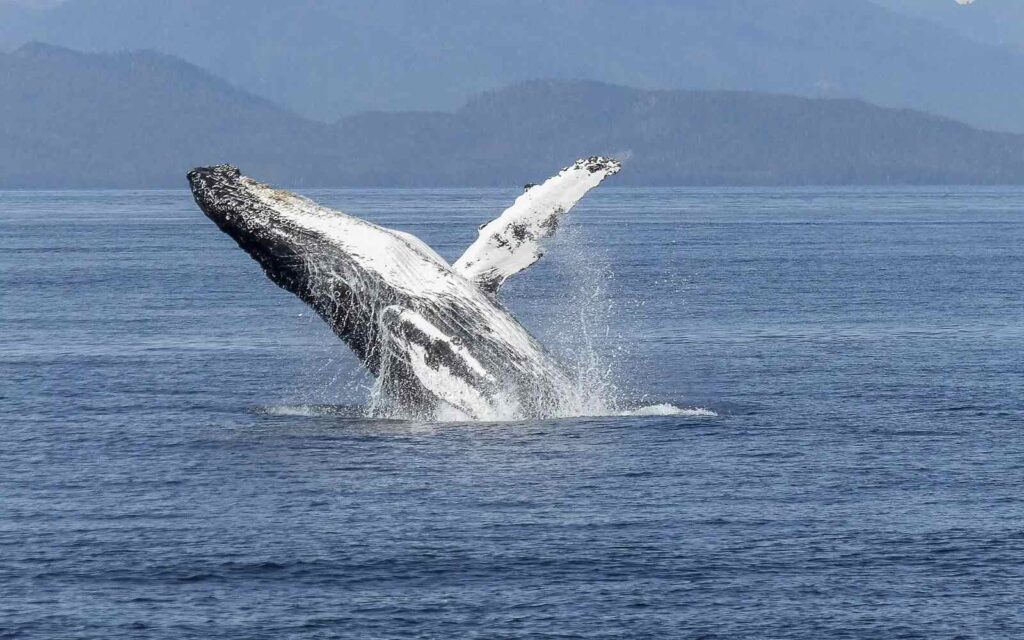
Types of Whales in Vancouver
Here’s a quick run of which species you can see during Vancouver whale watching tours:
- Killer Whales: Also known as orcas, these ‘killer beauties’ have distinct black and white markings, travel in family pods, and exhibit impressive breaches and tail slaps.
- Humpback Whales: Identified by their long pectoral fins, they are acrobatic, often leaping out of the water, and produce complex songs.
- Gray Whales: Migratory giants with a bumpy appearance, they undertake one of the longest migrations and display spyhopping, raising their heads above water.
- Minke Whales: Smaller and sleek, they have a white belly, are curious, and approach boats cautiously, sometimes even breaching.
Thankfully, the most common of all the whales in Vancouver is the killer whale!
Why Should I Go Whale Watching in Vancouver?
- Strategic location: the Pacific coast provides easy access to diverse whale habitats. The city serves as a gateway to the Gulf Islands, the Strait of Georgia, and the Juan de Fuca Strait, where whales frequent during migrations.
- Great whale variety: There are tons of whales in Vancouver, including orcas, humpbacks, gray whales, and minkes. This diversity ensures that visitors have a high chance of encountering these incredible creatures.
- Responsible whale watching: with operators adhering to strict regulations to minimize disturbance to the animals. Naturalists and marine biologists often accompany tours, providing valuable insights into whale behaviour and conservation efforts.
- Breathtaking natural beauty: The Vancouver coastline, with its snow-capped mountains and lush forests, adds a scenic backdrop to whale watching adventures, making it truly the best place for whale watching.
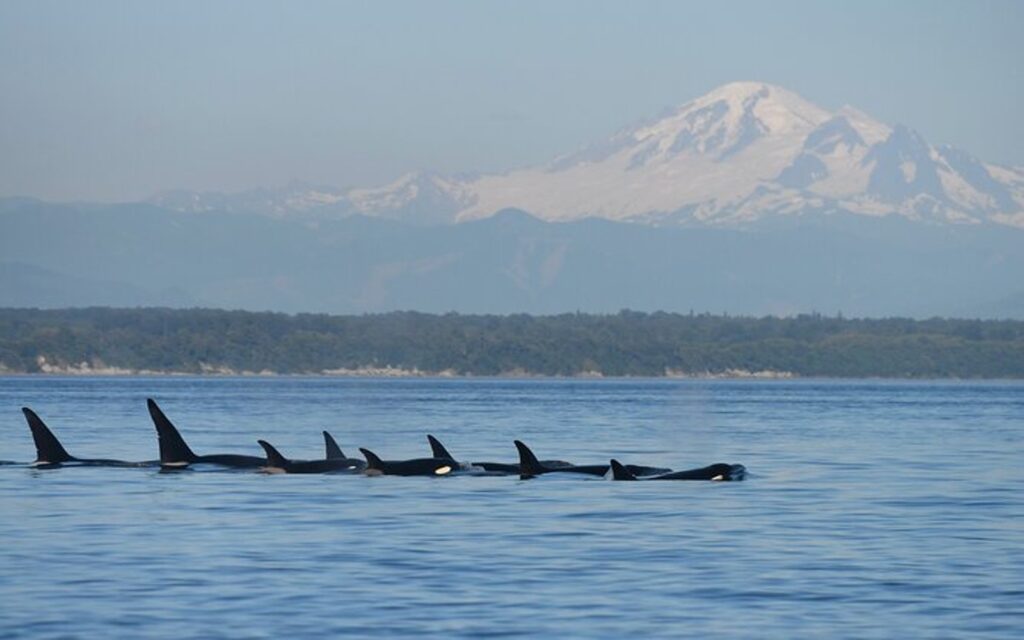
Tips for the Best Orca Watching in Vancouver
1) Monitor Weather Conditions
While the majority of your Vancouver orca tour will be spent amongst the sheltered waters of the Gulf and San Juan Islands, you must cross the Salish Sea in order to get there.
That means the crossing can become choppy, even during sunny weather. Check with your tour operator to ensure that weather conditions are to your satisfaction.
If your whale watching tour of Vancouver is cancelled due to weather, you will be compensated with tickets aboard a future journey or a refund.
2) Take a Motion Sickness Tablet
While each best whale watching tour in Vancouver is in sheltered waters, some passengers can still experience motion sickness.
If you’re prone to this condition, we recommend taking a Gravol or generic motion sickness tablet one hour prior to departure.
Travellers concerned about motion sickness will likely prefer a Vancouver whale trip with a larger enclosed or semi-enclosed vessel.
3) Dress For the Occasion
During the best Vancouver whale watching tours, you should always dress for the season. But also remain cognizant of the fact that it is almost always cooler and breezier on the water.
The following wardrobe tips should help you dress accordingly:
- Dress in layers, with a thin layer covering your skin, an intermediate layer and a light jacket.
- Long pants will be preferable to skirts or shorts unless at the peak of Summer.
- Beanies/toques and gloves are recommended for early and late-season departures.
- Hats, sunglasses and sunscreen are a must in the Summertime.
*Check with your company to see what items are included on your tour. Most open-air killer whale tours in Vancouver will provide hats, gloves and floater jackets. Be clear on this before you leave.
4) Go Early in Your Trip
As stated earlier, most orca watching providers guarantee that if you don’t see any whales, you’ll receive a free orca trip on a future journey.
While such occurrences are rare, we recommend placing an orca whale watching tour near the beginning of your Vancouver travel itinerary in order to take advantage of this guarantee.
5) Bring a Camera
While smartphone cameras have improved significantly in recent years, whale watching trips are one instance that highlights their shortcomings.
Vessels are required to remain 100 meters away from whales by the Pacific Whale Watching Association (PWWA). Unfortunately, this is just enough to render your smartphone’s zoom function largely useless.
As a result, a camera with a zoom lens is highly recommended to document your experience.
6) Purchase Your Tickets Online in Advance
In order to secure the best Vancouver orca watching prices possible, it’s recommended to purchase your whale watching tickets online.
This will allow you to compare whale watching prices from the various providers, as well as give you an idea of the various packages on offer (Victoria, Butchart Gardens, Seattle, etc.)
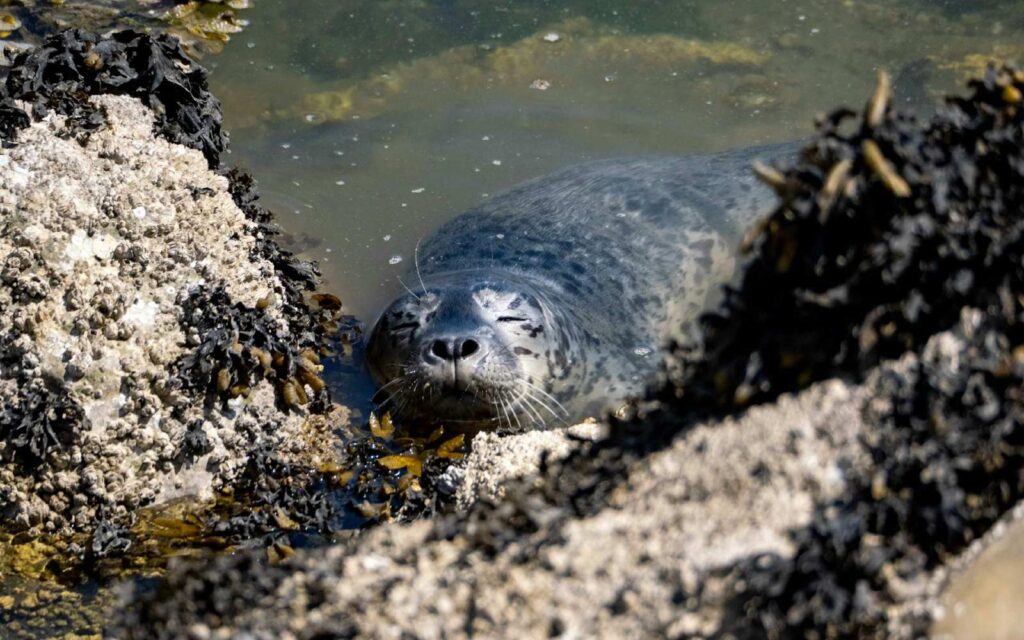
Other Wildlife on Whale Watching Tours of Vancouver
Bald Eagles: Spot these majestic birds perched high in treetops or soaring over the water.
Seals and Sea Lions: Observe these playful marine mammals lounging on rocky outcrops or bobbing in the water.
Porpoises and Dolphins: On Vancouver whale tours watch for the sleek dorsal fins of Dall’s porpoises and Pacific white-sided dolphins swimming alongside the boat.
Otters: Catch a glimpse of sea otters floating on their backs, often seen in kelp beds.
Marine Birds: Identify a variety of seabirds, including puffins, cormorants, and gulls, thriving in the coastal ecosystem.
Great Blue Herons: Spot these large, wading birds along the shoreline, especially in quieter inlets and bays.
Winter Whale Watching Trips in Vancouver
If you’re looking for off-season whale watching in Vancouver, you’re unfortunately out of luck.
Whale watching tours in Vancouver are typically unavailable in winter due to several factors.
Firstly, the harsh weather conditions and colder sea temperatures during winter make it challenging for tour operators to provide safe and comfortable experiences for passengers.
Secondly, many whales near Vancouver migrate to warmer waters during this season, reducing the likelihood of sightings in the area.
Lastly, shorter daylight hours limit the time available for tours.
Looking for winter whale watching? You’ll have to book tickets for whale watching in Victoria – just a couple of hours away on Vancouver Island.
How Much is Whale Watching in Vancouver?
The cost of whale watching tours in Vancouver varies depending on the tour operator and the length of the tour.
In general, most tourists go for half day tours that last between three to five hours.
Most of these whale watching tours range in price from $191.95 CAD to $359.00 CAD per person.
In American dollars, that’s a range of $141.77 to $265.00 per person.
Here’s a quick rundown of how much the top whale watching tours in the city cost:
- Vancouver Whale Watch ($191.95): 3-hour half day tour on open zodiacs from Steveston
- Prince of Whales ($235.99): 3-hour tour on large covered catamarans from Granville Island
- Lotus Land Whale Safari ($359.00): 3-5 hour marine safari with killer whales + hotel pickup
Most tour operators offer 15-20% discounts for youths and small children, though seniors usually have to pay the full price.
Ready for Your Whale Watching Tour from Vancouver?
I hope I’ve answered all of your questions about whale watching in Vancouver.
That said, if I’ve missed anything, though, don’t be afraid to hit me up about orca tours on the Vancouver Planner Facebook page or in the comments below.
As always, I’ll do my best to address them and find the best Vancouver whale watching for your needs 🙂
Photo credits: Vancouver Whale Watch + Prince of Whales Tours.

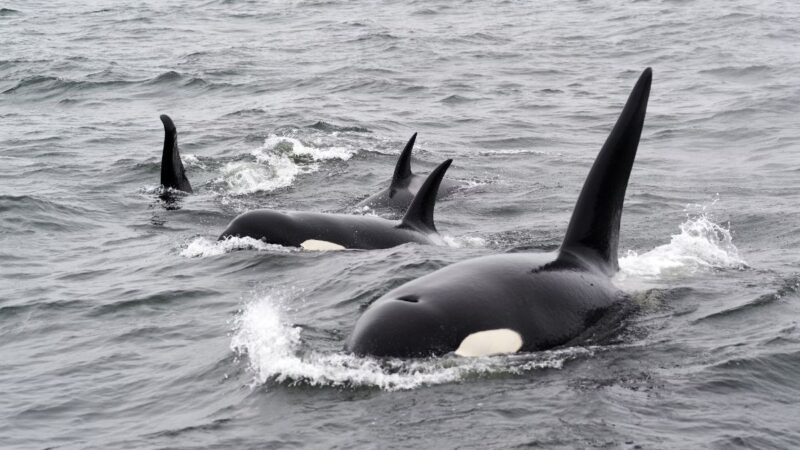
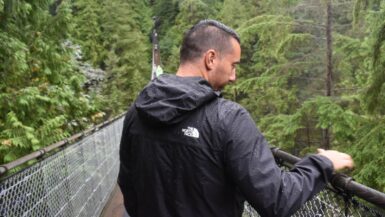
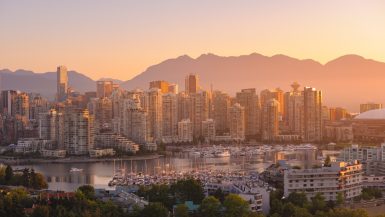

Leave a reply